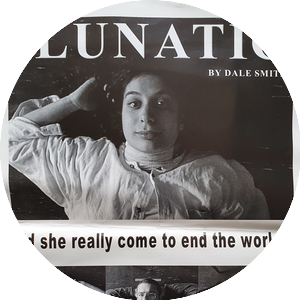Motivation
Back From the Dead (BFD) was my epic fan-fiction, a collection of linked stories that together told an overarching Doctor Who story. Writing the story – one story a month for the best part of a year – taught me a lot of things, but my original motivation had nothing to do with learning anything. I’d discovered an online writing group called alt.drwho.creative, where you could post any story without an editor needing to think it was any good and the other members would comment and feedback, almost instantly. I wanted people to tell me I was good at writing.
Inspiration
The story mostly came from Rona Munro’s excellent Survival novelisation, which left both of the main characters infected with a Cheetah Virus that could turn them into savage hunters driven only by instinct. In 1990, when I heard that Virgin Publishing were going to publish new Doctor Who adventures following on directly from Survival, I had grand ideas of pitching the story to them. But I was nowhere near ready to even create a proposal for a full-length novel, and the characters moved on.
Later, I read Marc Platt’s Lungbarrow, and a lot of the background information that had been written back when it was the first draft of Ghost Light. The ideas of the living house and his answers to the question of the Doctor coming from a sterile race but having a Granddaughter connected with my original idea of the Doctor and Ace still infected by the Cheetah Virus. I came up with my own answers to the Problem of Susan, and pretty much sat straight down to write.
Getting the Story
The main thing about Back From the Dead was that it was effectively a serialised story, with each chapter already in the public domain as I was writing the next. This is not the ideal way of working: you find things out the more you write a story, and usually your second draft involves going back to the beginning to work in the things you now know about everything at the end. And it also meant that there was an expectation that something would come out regularly, which affected the overall story - Being a Transcript of a Telephone Conversation was written purely because the next story in the series wasn’t finished on time, but it became one of my favourite stories.
Each story was developed in its turn – except for The Evolution Machine, which was adapted from a Doctor Who spin-off novel I’d started writing and abandoned after a few chapters. With the structure depending on time travel, the audience saw events out of sequence, and this meant that some of the later stories were plotted partially around the events that I’d hinted at in earlier episodes. Piece by piece, bit by bit, the overall story came together.
What Happened Next
The serialised structure was a difficult discipline to work to, but it did teach me a lot – not least that I could do it, but also the importance of redrafting when I had the luxury. It also broke up what was a daunting task and made it seem more possible. I’d given up pitching Doctor Who ideas to Virgin because every time I tried to write something novel length, I got bored and ran out of steam – part of the reason I ended up writing plays instead, since full length there is still only 90 pages. By the end of Back From the Dead, I knew I could physically write that many words and still like most of them. Without the confidence that gave me, I would have never pitched Heritage to the BBC.
What it didn’t do was get me the praise I was looking for. Most of the stories went up with little comment from those reading, but when Heritage was announced there were a small number of people who said they were excited about reading it because of Back From the Dead. As an exercise in creating a fan base or making my fortune, it was an almost unmitigated disaster … but in terms of what I leaned about myself and my writing, it’s one of the most important things I’ve ever done.


